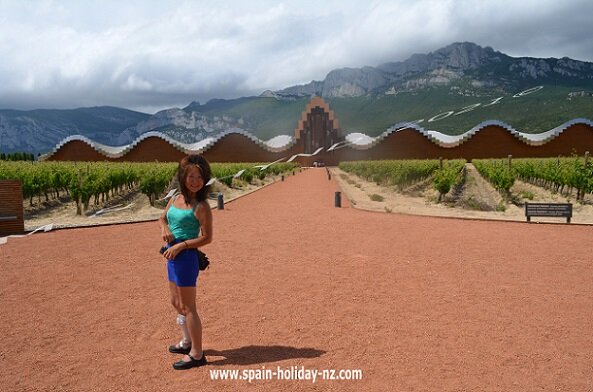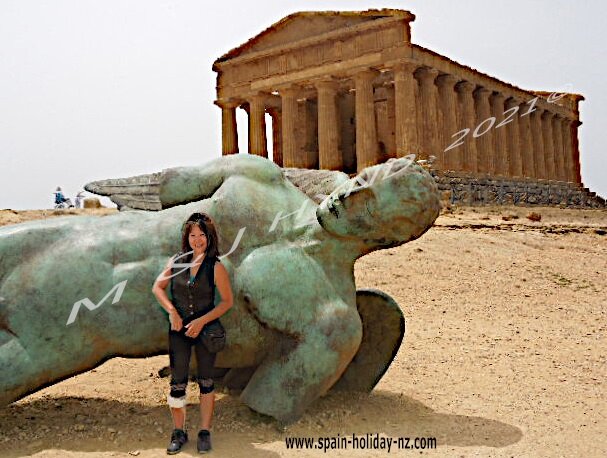AUT-Walk/Ankle-Study (EEG/EMG) Brain Computer Interface Intervention
INTRODUCTION:
“… This research is about a Brain Computer Interface. A Brain Computer Interface is a system that interprets brain signals, and then sends a command to another device.
Research has begun exploring whether Brain Computer Interfaces can help improve rehabilitation for people following stroke.
Our Brain Computer Interface interprets brain signals while you are moving your ankle and then uses this information to trigger electrical stimulation to one of the ankle muscles.
This approach can improve brain activity in the part of the brain that controls the affected ankle...''
An interesting research study by Physiotherapy Dept AUT (Auckland University of Technology), it sounded great: a step in the right direction for Stroke Survivors - Brain Computer Interface interventions research was already in play, in NZ, for quite some time.
We met the very pleasant Health and Rehabilitation Primary Investigator/Researcher at AUT North campus, who is a Lecturer in the Physiotherapy Department within the School of Clinical Sciences at AUT. The venue was very well sign-posted, and the directions to carparking were excellent.
The appointment was to test my ankle function – to see whether it was possible for me to enroll in order to participate in the study. The study uses two medical technologies at the same time: electroencephalography (EEG) which records brain activity when moving the ankle, and Electromyography (EMG) which recording muscle activity when the ankle is moving.
My ankle movement:
Background: living in (at least) two-storied home, always safer to wear my AFO (Ankle Foot Orthosis); I carry things one-handedly upstairs and downstairs, in the garden. My ankle is encased in a legbrace till bedtime – when I'd previously volunteered at Universities, if necessary I would go barefoot… I have a very unsteady walk, as I have footdrop, clonus, and impaired sensation.
Since a year ago, I have been more barefoot around our single-level home. The exercise of being barefoot, is way better than a few years ago at AUT, as the physiotherapy Supervisor demonstrated my clonus, footdrop during 3rd-year undergraduate Training. It still needs improvement...
At this first appointment, my ankle-joint having been enclosed in the AFO for more than 20 years may have lost its ability to slightly flex, which was a requirement for the current AUT study. The primary researcher timed me on the prepared walkway. Also my ankle activity was measured in the Biodex Isokinetic Dynamometer device that had me stretched-out, strapped and tethered (impaired sensation on my right side) – like a dentist's chair.
O -k-a-y... feeble activity on the monitor, to my untrained eyes; ...am in the trial? Yes – ok, great.
In the second session, I was ushered into a room with monitors on either side; in the middle of that room was the seat, ...a-ha, the dentist's chair. Also introduced to me were two other researchers who aided the primary investigator to set up and monitor the process.
... 'the EEG cap' ready to measure brainwaves, fitted snugly over my skull. At various points the nodules (electrodes) made contact with skin of my scalp. Upon instruction by the set-activity, I moved my ankle, and the cap detected small electrical changes in my brain, sending the information to the computer where a program painted a graph of brain activity on the monitor, and much more. Wow.. that’s my brain activity – so exciting – a real-life sci-fi.
I vaguely remember the action of keeling over (already unconscious before I hit the ground), when I talked with colleagues, at work as an analyst-programmer in IT in the '90's. My brain function had really slowed: I was talking... but my words were in my head (I realised), as my mouth stopped working for some inexplicable reason. Puzzling over that fact, (in very slow m-o-t-i-o-n, it seemed) I was unconscious in a heartbeat.
I hazily remembered a few weeks after the event, being prone on my back in the hospital bed - my body was like a lump of extremely leaden concrete, unable to even turn without the help of nurses. This was in the second hospital (London) I was rushed to by ambulance as the first hospital I was admitted to was provincial and couldn’t help. Finding that they lacked Neurosurgery expertise required to deal with my acute brain haemorrhage, precious time was wasted in finding the right hospital that could take my case.
Seven or eight hours later, at the London hospital, I had life-saving open-brain surgery which lasted 9 hours. During that intervening time, though, my many braincells died, as they were starved of oxygen-rich blood, (brain bleed) before intervention by Neurosurgeons.
The slogan that we have in NZ for Stroke: F.A.S.T. is so very important: Face, Arm, Speech, Time for action to get to hospital. In the UK in 1995, 'stroke' had little public awareness.
Neurosurgeons found that it was an AVM (Arterio Venous Malformation) present at my birth, that had ruptured with devastating consequences. Hospitalised for 3 months when I had the brain haemorrhage; I had to have a second procedure, six months later.
Radio-surgery: called the Linear Accelerator, a space-agey device which was traumatic on my already battered self, to remove the last bit of AVM still in my brain after the initial haemorrhage/stroke.
Since 1995, I have had to relearn life from scratch, even English; (no) communication, (no) vocabulary, (no) short-term memory, … was very, very debilitating. My sense of self, and self-esteem was totally crippled, from being the easy-going, loved life girl, travelled the world, ballroom-danced, skied, did sports...to.. zilch. {see: life changed in (with) a stroke..}
Crete; Greece
ST. ANTON; AUSTRIA
VALLEY OF THE KINGS, LUXOR; EGYPT
Bodrum; Turkey
ephesus; turkey
tenerife; spain
I found I that couldn't pronounce words any more, my mouth was wobbly as half my face drooped. My memory was so very fleeting, it was gone before I could grasp the wisp of thought.
I couldn't stand or walk, talk, read, write, remember; rightside paralysis and all that it entailed; footdrop, clonus, sub-luxed shoulder, I had severe aphasia, etc; confined to a wheelchair.
Back to the AUT Walk-ankle study,.. the dentist-like chair: was useful for persons with different abilities, it could be moved into a more upright position as if I was standing up but still tethered to the chair.. to the horizontal, .. or if I was doing a headstand - cool.
Locked horizontally and turned to the right monitor, I had to follow series of repetitive cycles requiring me to attempt to move my ankle in time with the moving line on the computer. Concentration was the key. Next, swivelled (in the chair) to the left monitor. Researchers were able to test my ankle strength. Again, focussing to exclusion of all else, I continued doing the exercises, to end up plotting an series of amazing graphs...
Then the 'intervention': to deliver the electrical stimulation to boost my own brain activity. As I tried to lift my toes, some electrical stimulation was delivered to my leg using small self-adhesive electrodes. Concentration, and active willing-the-'move' (visualization) and doing the 'move' with my own minute ability. Then, to re-measure my ankle-strength. I went to three sessions, spaced at least a week apart. My participation went remarkably well.
After my AVM brain-haemorrhage/stroke, I've striven to:
Regain voluntary movements in muscle groups that were lost (i.e. walk-with-gait after being wheelchair-bound), regain muscle mass, ...do the things that were second-nature to me, that proved very challenging after the stroke.
I have had to learn patience. Slowly but surely, if you throw a lot of mud at a wall, some of it will stick after some time. Break a goal down to minute pieces-of-effort and perform the action required, repeated constantly, till it becomes second nature. Almost impossible, or is it that the computation of time, in question?
Taking the minutest of steps, I shamble-walked slowly, inching my way forwards in case I fell down and did more damage to myself. I had severe sensory loss couldn't feel myself on the right side. We only traveled to places where it would be possible to stretch out my legs every so often, and use my wheelchair, so driving holidays were called for.
After I'd got out of the wheelchair, more time was spent sitting down on driving vacations. With impaired movement, gaining weight took a short time to achieve but a v-e-r-y long time and tremendous effort to reduce it!
barcelona; spain
marrakech; morocco
south africa
monaco
Albeit, new neural pathways are very possible: this increases with the frequency a behavior is performed. See it, Feel it, Believe it ...over the years I'd managed to walk further, negotiate and climb slightly higher steps; takes time and effort.
With this intervention Brain Computer interface, it could be utilised in multiple ways – great. Bring on more research and with iterations, the finished product still to come – sweet!
ITaly: herculaneam ruins
spain: ysios bodega / vineyard
sicily; agrigento greek ruins
sicily; agrigento archaeological site
bangkok; King power mahanaknon glass skywalk
maldives: island hopping
Aside from the Brain Computer Interface Intervention, since my stroke I've slowly learnt to do things differently in a Do-It-Yourself fashion. I am a one-Handed stroke survivor, have learnt to speak more coherently, am remembering more despite gaps of thought in speech; aphasia is still present but slightly diminished, learnt to write and hold chopsticks with my left hand, do photography, pottery, silk-paint, etc.. [See: 2016-Bday-StrokeSurvivorStory-Compilation Video].
A slightly different approach to Brain Computer Activity, I participated in and really enjoyed the previous study in 2018.
SEE: AUT Walk-Study EEG-FES 2018, Brain Computer Activity.
Thanks to Lead Investigator Researcher Dr. Sharon Olsen for giving me this opportunity to collaborate/participate in the exciting research phase of cutting-edge technology; also Dr. Nitika Kumari and Priya Suresh, who assisted with the research, and to the whole AUT research team:
Lead Investigator Dr. Sharon Olsen, Rehabilitation Innovation Centre, Health and Rehabilitation Research Institute; AUT University
Co-investigators - Dr. Nada Signal, Professor Denise Taylor, Gemma Alder, and Dr. Usman Rashid (AUT University), and Dr. Imran Khan Niazi (NZ College of Chiropractic).
For further reading, click Previous research study on this type of intervention, and click for Research Activities, Rehabilitation Innovation Centre.



























